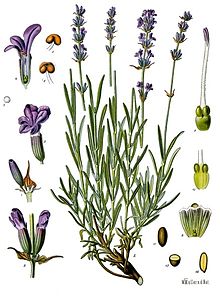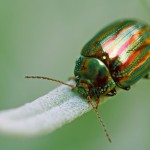 It doesn’t take a very fertile brain to extend the ‘Object of the Month’ concept to other areas: so welcome to ‘Plant of the Month’. This should perhaps be the titan arum (#tinytitan), which has flowered this year in Edinburgh as well as in Cambridge, but since it is (a) plant of the decade rather than of the month, and (b) very well covered elsewhere, I have decided to choose instead the lavender, brilliantly represented during July in almost all areas of @CUBotanicGarden (as well as in my own rather more modest plot).
It doesn’t take a very fertile brain to extend the ‘Object of the Month’ concept to other areas: so welcome to ‘Plant of the Month’. This should perhaps be the titan arum (#tinytitan), which has flowered this year in Edinburgh as well as in Cambridge, but since it is (a) plant of the decade rather than of the month, and (b) very well covered elsewhere, I have decided to choose instead the lavender, brilliantly represented during July in almost all areas of @CUBotanicGarden (as well as in my own rather more modest plot).
But first (since one can’t just pass over it), my pictures of the Tiny Titan from 17 and 19 July:
 and a shot of the much bigger Edinburgh plant when it was past its flowering best:
and a shot of the much bigger Edinburgh plant when it was past its flowering best:
Back to the rather less exotic, but no less interesting, lavender. Its name comes from the Latin ‘lavandula’, Italian ‘lavanda’, French ‘lavande’, and the etymology is perhaps connected to the Latin verb ‘lavare’, to wash (cf. English ‘lave’), because it was used to scent fabrics during and after washing, and bodies during/after bathing (probably a good plan in an age of infrequent bouts of both). One dictionary claims that in Middle English ‘lavender’ meant a washerwoman, and (NB, ‘and’ not ‘but’) also ‘prostitute, whore, camp-follower’.
My Italian dictionary notes in passing that lavender grows best in hot, sunny climates. It’s not a British native, then … Actually, it may have been introduced to southern Britain by the Romans, seeking an imitation of home bathing comforts. The Elder Pliny recommends it for comfort in bereavement (as well as menstrual problems), and earlier, Dioscorides suggested a lavender tisane for chest complaints. Galen claimed it as an antidote (taken in wine) to poisons. As physician to the not very attractive emperor Commodus, he may have had occasion to try its efficacy: though in the end Commodus was strangled in his bath by his personal trainer, a wrestler called Narcissus.
Needless to say, there is no shortage of nomenclature issues in the history of lavender: not least the confusion over whether the Biblical nard and spikenard refer to lavender or to a Himalayan plant, Nardostachys jatamansi.
As to so-called French, English and Spanish lavender, usage seems to have varied widely in the eighteenth and nineteenth centuries. But it is certain that the plant has been in cultivation for use as a decorative, aromatic and medicinal plant for the last four millennia.
We tend (thanks to canny marketing) to think of lavender as from Provence: but of course lavender was an important crop in Norfolk and Surrey (where the lavender fields are evoked in Michel Faber’s novel, The Crimson Petal and the White) in the nineteenth century. My grandmother used Yardley’s Lavender perfume: indeed, I think the scent has become a shorthand for a certain historical type of ‘old lady’ – Miss Marple almost certainly used it.
The perfumier firm now known as Yardley’s was established in London in 1770 by the Cleaver family: it was bought (in bankruptcy) in 1823 by William Yardley, whose name it has borne ever since. As Yardley & Statham, it exhibited at the Great Exhibition of 1851, though ‘English Lavender’ scent was not launched until 1873. The famous image of the lavender-seller was derived from the ‘Cries of London’ series by Francis Wheatley (1747–1801), one of the contributors to John Boydell’s ‘Shakespeare Gallery’: the original image of ‘primrose sellers’ has been modified by changing the flowers.
Queen Victoria was very fond of the fragrance of lavender, and in 1886 bestowed the title of ‘Purveyor of Lavender Essence to the Queen’ on Sarah Sprules (1836–1912), a Surrey grower and distiller who had taken over the physic garden business of her father and grandfather. In the twentieth century Yardley has held royal warrants for Queen Mary, the Prince of Wales (later Edward VIII), George VI and Queen Elizabeth, Elizabeth II and the current Prince of Wales.
But it is the essential oil rather than the perfume which is popular these days. Put it on the soles of your feet, or inhale it from your pillow, to relax, or use it as a mosquito repellent or hair conditioner. (Unsurprisingly, a huge number of medicinal uses is offered on the web, but very few of them seem to have any sort of scientific backing, and some are positively dangerous.) Meanwhile, traditional lavender bags are still popular (and I’m staggered at the prices people seem able to charge for such an easily created product), while lavender florets turn up in recipes for everything from cupcakes to lemonade to baked fish to icecream.
In botanical terms, lavender is in the Lamiaceae (formerly Labiatae) family – along with mints, salvias and much else.
The invaluable Plant List gives 261 varieties, though a large proportion of these come under the ‘low’ confidence level category, and many are synonyms. Lavandula angustifolia (named by Philip Miller in the Gardener’s Dictionary) is ‘English lavender’, and Lavandula stoechas (the one with bunny ears) French.

Lavandula stoechas (French lavender). Sadly, it is classed as a noxious weed in some parts of Australia.
Apparently, much commercially grown lavender is Lavandula x intermedia, which produces more oil than L. angustifolia: some growers claim that this more abundant oil is also inferior to that of the latter, while others disagree.
At the Botanic Garden, lavenders appear in the Systematic Beds, but a separate area has recently been planted up with lavender and rosemary varieties (so far free of the beautiful but destructive rosemary beetle), and of course lavenders also appear in the bee borders, the dry garden, the alpine beds, and – perhaps most spectacularly – as border or edging plants in the rose beds.
Last week, all the beds were alive with with bees in all shapes and sizes. I think I can recognise the familiar white-tailed bumble-bee and the honey bee, but I’m useless at most of the other 250-odd bee species. However, for the next few weeks, the lavender beds at the Botanics will be the place to improve my knowledge.
Caroline

























Pingback: Plant of the Month: March 2018 | Professor Hedgehog's Journal